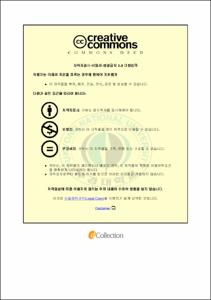동아시아 주식시장에 대한 미국 선물 및 현물시장의 정보이전효과에 관한 연구
- Alternative Title
- A study on the Spillover Effects from US Spot and Futures Markets to East Asian Stock Markets
- Abstract
- As development and liberalization of the capital markets around the world carried out rapidly, each country has a correlation with each other. In case of the East Asian stock markets, there are co-movements in the US-centered. Therefore participants into the East Asian stock markets sensitively react to the movement of US finance markets because of the difference of the trading time zone. On the assumption, we examine the spillover effect from US Spot and Futures markets to East Asian Stock markets. To determine which US market is more influential about East Asian markets, we divide into five groups based on each East Asian stock market like Korea, Japan, Hong Kong, China, and Taiwan, and examine spillover effects by using daily returns of Spot and Future markets with each group.
For this paper, it has two characteristics. First, we use Generalized VAR and forecast error variance decomposition given by Pesaran and Shin(1998) to explore the total spillover effect from US markets to East Asian markets and compare each spillover effect of US Spot and Futures market in the total spillover effect through corresponding spillover index given by Diebold and Yilmaz(2012). Followings Pesaran and Shin(1998), dynamic analysis of VAR models given by Sims(1980) routinely carried out using the orthogonalized impulse response, where the underlying shocks to VAR model are orthogonalized using the Cholesky decomposition before impulse responses forecast error variance decompositions are computed. However, it had a matter that this approach was invariant to ordering of the variables in the VAR model. So, we apply Generalized VAR and forecast error forecast error variance decomposition that show consistent results regardless of ordering of the variables. Second, the total and each spillover effect through Generalized VAR and forecast error variance decomposition are just averages during entire period (Jan. 2000 to Jun. 2014). To determine time-varying spillover effects, we use the 250 days-rolling sample analysis to compare movements of spillover effect in each group.
Through these analyses, we find four remarkable results. First, when we examine the total spillover effect on each group, except for Chinese stock market, US markets (Spot and Futures market) affect East Asian stock markets in the total spillover effect during entire period. After that, we compare spillover effect of US spot market and US Futures market in each group. As a result, US Futures market is more influential than US Spot market in Korea, Hong Kong, and Taiwan. Third, by using the 250 days-rolling sample analysis in each group, we compare spillover effect from US markets to each East Asian stock markets and each East Asian stock market on the chart. Then, we analysis short-term movement and find that total spillover effects from US markets are in inverse proportion to East Asian stock markets in Korea, Japan, and Taiwan. Lastly, we devide each spillover effect from US markets to East Asian markets in two like US Spot market and futures market and compare that on the chart. As a result, we find that influence of US Futures market has increased sharply in all groups after European debt crisis has occurred since 2011, then the disparity of influences between US Spot and Futures market was enlarged.
- Issued Date
- 2015
- Awarded Date
- 2015. 2
- Type
- Dissertation
- Publisher
- 부경대학교 일반대학원
- Alternative Author(s)
- Changhoon Lee
- Affiliation
- 경제학과
- Department
- 대학원 경제학과
- Advisor
- 장병기
- Table Of Contents
- < 목 차 >
Abstract
제 1 장 서 론 1
제 1 절 연구 배경 및 목적 1
제 2 절 논문 구성 5
제 2 장 선행연구 검토 6
제 1 절 국외 선행연구 6
1. 미국의 시장 간 상관관계 및 정보이전효과에 관한 연구 6
2. 국가 간 정보이전효과에 관한 연구 7
제 2 절 국내 선행 연구 8
제 3 장 연구 설계 10
제 1 절 분석방법 10
1. 단위근 검증 10
2. 일반화 벡터자기회귀 모형과 일반화 예측오차 분산분해 모형 11
3. 전이효과(spillover) 측정 15
제 2 절 분석자료 및 기초통계 16
1. 분석자료 16
2. 기초통계 17
제 4 장 실증분석 결과 18
제 1 절 단위근 검증과 VAR모형의 시차 결정 18
1. 단위근 검증 결과 18
2. VAR모형의 시차 결정 20
제 2 절 수익률의 전이효과 분석결과 23
1. 그룹Ⅰ의 총 전이효과 분석결과 24
2. 그룹Ⅱ의 총 전이효과 분석결과 25
3. 그룹Ⅲ의 총 전이효과 분석결과 26
4. 그룹Ⅳ의 총 전이효과 분석결과 27
5. 그룹Ⅴ의 총 전이효과 분석결과 28
제 3 절 전이효과의 시간가변성 29
1. 그룹Ⅰ의 전이효과 시간가변성 분석결과 30
2. 그룹Ⅱ의 전이효과 시간가변성 분석결과 33
3. 그룹Ⅲ의 전이효과 시간가변성 분석결과 37
4. 그룹Ⅳ의 전이효과 시간가변성 분석결과 40
5. 그룹Ⅴ의 전이효과 시간가변성 분석결과 43
제 5 장 결론 47
참고 문헌 49
부 록 51
- Degree
- Master
- Files in This Item:
-
-
Download
 동아시아 주식시장에 대한 미국 선물 및 현물시장의 정보이전효과에 관한 연구.pdf
기타 데이터 / 2.35 MB / Adobe PDF
동아시아 주식시장에 대한 미국 선물 및 현물시장의 정보이전효과에 관한 연구.pdf
기타 데이터 / 2.35 MB / Adobe PDF
-
Items in Repository are protected by copyright, with all rights reserved, unless otherwise indicated.